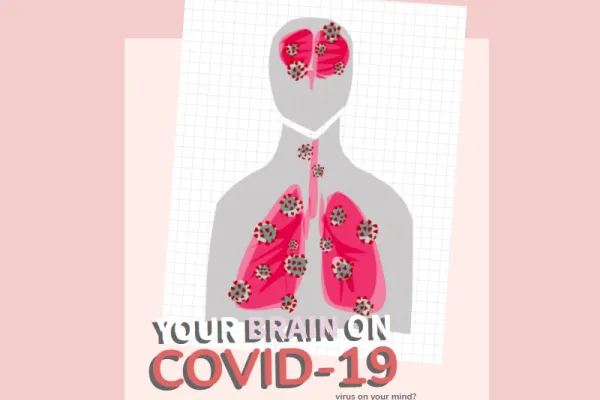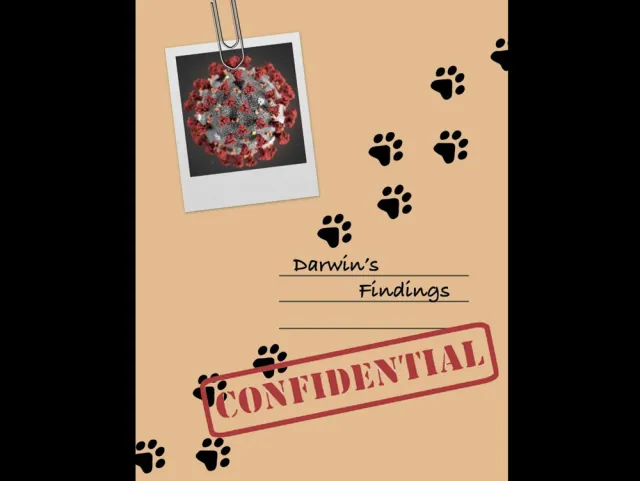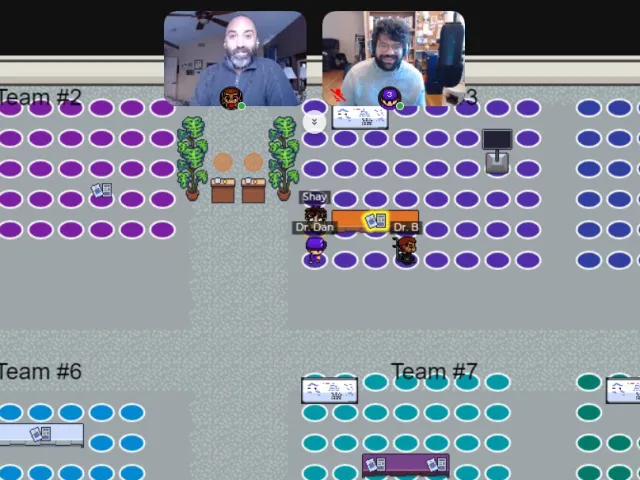Communicating the Science of the Pandemic
Research & Inquiry

Published December 11, 2020
The task: Create a communications product for an audience of non-scientists that “informs and educates” about the biology of COVID-19.
The tools: Multimedia platforms and the latest scientific research.
The teams: More than 70 Smith students taking Biology 132 this semester.
The results: Science communications projects ranging from an adventure website about COVID-safe activities, to a poster campaign offering guidance to expectant mothers during the pandemic.
For professors Michael Barresi and Daniel Vahaba, who co-taught Biology 132 this fall, focusing on the coronavirus was a natural fit for their course, “Molecules, Cells and Systems.”
“Nothing is more central to the realm of biology than the current pandemic,” says Barresi, professor of biological sciences.
“Historically, we’ve had a writing component in this class—a Congressional letter about an important scientific issue,” Barresi explains. “It wasn’t hard to convert the focus to COVID-19. The biggest change we made was to diversify the approach students could take to communicating about their chosen topics.”
Vahaba, Mellon Visiting Assistant Professor of Public Discourse in the Disciplines, says students were encouraged to find ways to make scientific facts about the coronavirus easily accessible to their target audiences.
The cover art for a parents' guide to a children’s storybook about COVID-19 by Lauren Cho ’23, Nicole Tresvalles ’24, Jade Lee ’24 and Laura Dreher ’24.
“One goal was to increase the amount of accurate public discourse about the pandemic,” he says. “Another skill we were hoping to impart is having students learn to do research using primary sources.”
Noor Sheikh ’22 was on a team that created a website offering information about COVID-19 to elderly people and their caregivers—including why the virus is particularly dangerous to the elderly.
Team members quickly became engaged in learning what they needed to be able to reach their target audience, says Sheikh who is majoring in engineering science.
“Working on this project was a novel way of interacting with the content,” she says. “Pulling things out of primary sources was good practice for real-world research, where cutting-edge things aren’t always found in textbooks. The most valuable aspect was giving us the opportunity to learn skills and make projects—not just for a grade—but to help make positive change during this tumultuous time.”
(Sheikh’s teammates—all members of the class of 2023—were Arushi Beohar, Cezanne del Castillo, Grace Phelps and Lauryn Rivera Urquidez.)
Nicole Tresvalles ’24—whose team produced a children’s storybook about COVID-19 and an accompanying parent guide—says the class helped broaden her understanding of the pandemic.
“It’s a new perspective, having to actively think about the people we’re trying to reach and connect with at every step of the way,” says Tresvalles. “I gained a greater appreciation for what the researchers, scientists and biologists are doing in this very moment to help us go back to our normal lives. It broadened my horizon and even opened doors to interests I didn't realize I had.”
(Tresvalles’ teammates were Lauren Cho ’23, Jade Lee ’24 and Laura Dreher ’24.)
Smith professors Michael Barresi (left) and Daniel Vahaba launch a virtual student project session designed like a video game.
Students —who are studying in locations around the globe this semester—shared their final projects in the last week of classes in a virtual session designed like a video game. Participants could move their avatars around a custom-built digital classroom to enter project displays and leave comments on shared whiteboards.
Team projects featured sophisticated graphics and cited multiple research sources. The adventure website, for example, offered participants a chance to choose various activities—dining in a restaurant, visiting a friend, taking a walk outside—and learn the relative risks they pose of exposure to the virus.
Other projects included a zine about the biology of coronavirus vaccines, a policy brief about the role that environmental racism plays in the pandemic, and a pamphlet aimed at college students who have tested positive for COVID-19: “So you have COVID. What does that mean?”
In addition to lessons about science, Vahaba says the class gave students experience with working in teams—no small feat in a semester where the Smith community is in remote learning mode.
Barresi says he hopes focusing on coronavirus biology was empowering for students.
“The more you know about a given thing, the more you are in charge of it,” he says. “My hope is that tackling this problem with students will make us all less stressed about it.”
This image is the cover of a magazine created for Biology 132 by Gabriella Bushala '24, Molly Friedman '24, Audrey Kim '24, Morgan Morrison '23 and Emma Smith '23.

